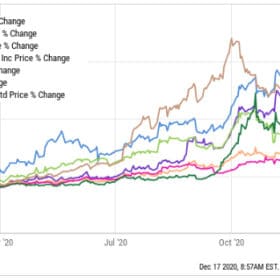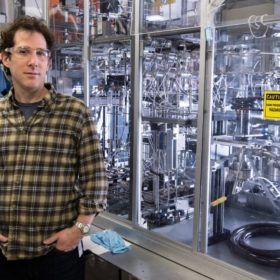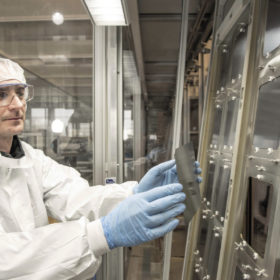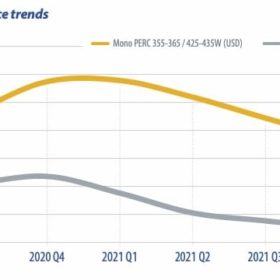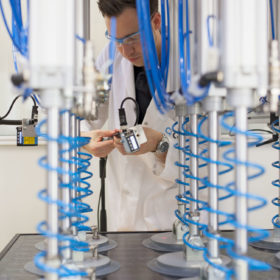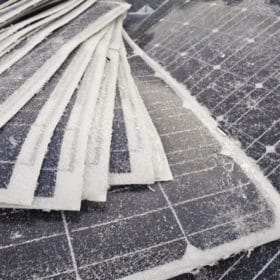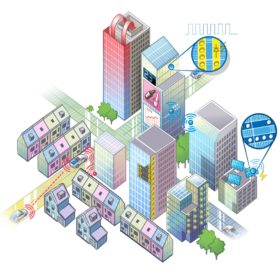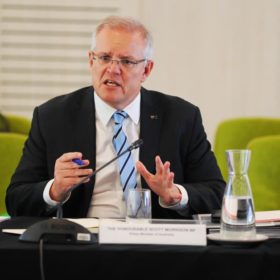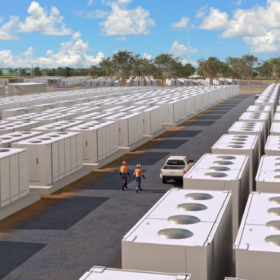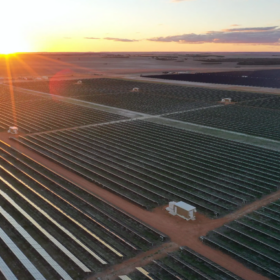Looking into the cracks
A white paper published earlier in December by PV Evolution Labs investigates the formation of performance damaging cracks in PV cells, based on mechanical stress testing of more than 40 commercially available PV modules. While the lab warns that susceptibility to cracking will change according to the specific bill of materials making up each module, certain technologies are shown to perform better than others.
Fluence gains investor to help drive energy storage growth
AES and Siemens will remain major shareholders and will continue to support Fluence’s long-term growth. The company currently has 2.4 GW of projects deployed or awarded across 24 countries and territories worldwide.
Solar stocks finish as 2020’s hot ticket
In spite of this year’s tumult, many solar companies’ stock prices have seriously soared – with a number of companies seeing their share price quadruple in the last year.
New approach to III-V tandems sets 32.9% efficiency record
A collaboration between the U.S. National Renewable Energy Laboratory and the UNSW has yielded a new efficiency record of 32.9% for a tandem cell device utilizing III-V materials. Key to the achievement was a new technique enabling the researchers to take advantage of “quantum wells” in the material that serve to trap charges and enable tuning of the cell bandgap to absorb more of the light spectrum.
Oxford PV retakes tandem cell efficiency record
Perovskite developer Oxford PV has set a new world record for perovskite-silicon tandem cell efficiency at 29.52%, edging out the previous record set less than a year ago by Helmholtz Zentrum Berlin. The new record has been certified by the U.S. National Renewable Energy Laboratory.
Solar set to shine in a post-pandemic world
The world is still combating Covid-19, with Europe now impacted by a second wave of the virus. While the market reported delays for a few projects, the impacts on the PV sector remain unclear. But if the world fails to curb the Covid-19’s spread, governments may be forced to reintroduce strict measures, thereby sapping PV demand. PV InfoLink’s Mars Chang expects module demand to hit 126 GW by the end of this year.
New three-step module testing from TÜV Rheinland
German standards body TÜV Rheinland is introducing a new testing and certification program for pv modules. The program incorporates component specific tests and ongoing, random testing of running production lines. Hanwha Q Cells assisted in the development of the program, and this week announced it is the first manufacturer to receive the new Quality Control PV Certification.
Weekend read: The afterlife of solar panels
Use of the term “circular economy” is growing in virtually every industry worldwide – solar included. As noted throughout Q3, in the UP initiative’s focus on circular manufacturing, work is already underway to integrate circular principles into all areas of business, from internal operations and supply chain management to manufacturing and installations. In a recent analysis of PV recycling, BloombergNEF detailed six conclusions for the solar industry and those who are trying to make it more circular. Cecilia L’Ecluse, solar associate, and Julia Attwood, head of advanced materials at BloombergNEF share these conclusions as part of our quarterly theme on PV module recycling.
Ever heard of photovoltatronics, the new frontier of solar in urban environments?
Scientists in the Netherlands are planning to build intelligent PV devices for energy and information applications. Their intention is to make this approach a new field of PV research, whose ultimate goal is enabling solar cells to communicate with each other and with other devices, ensuring that all the generated energy ends up exactly where it’s needed, especially in the urban environment.
Morrison to feel the heat as U.S. turns to clean energy future
The election of Joe Biden as U.S. president is set to heap further pressure on Australian Prime Minister Scott Morrison to lay out a clear and firm strategy charting the nation’s transition to a clean energy future.


